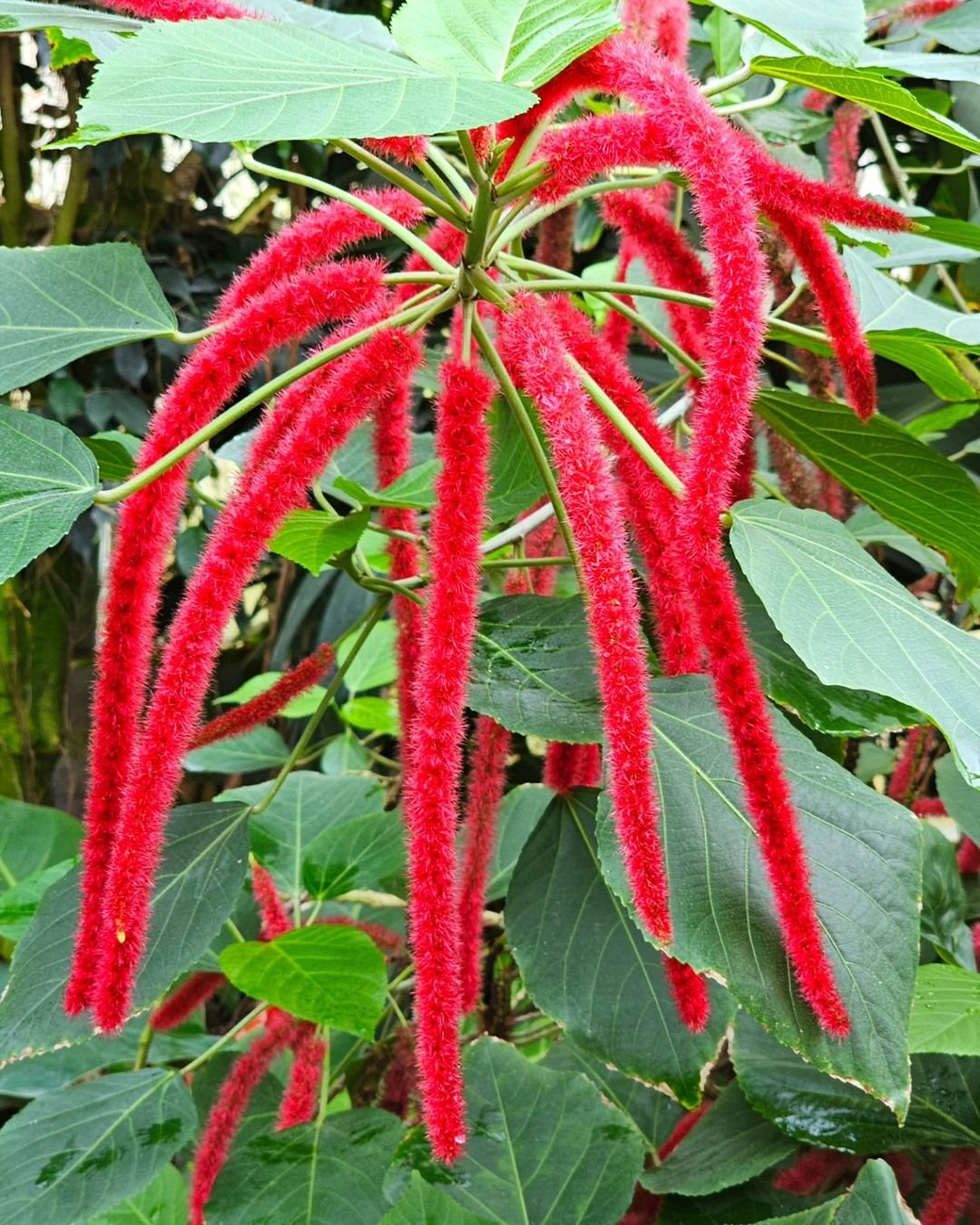Discover the vibrant beauty of the Radiant Plant (Acalypha hispida). Learn expert tips on growing, caring for, and utilizing this striking houseplant to enhance your indoor space!
The Radiant Plant, scientifically known as Acalypha hispida, is a stunning tropical plant known for its unique, fuzzy red catkin flowers that can add a splash of color to any indoor garden. In this guide, I’ll share my expert tips on how to grow, care for, and appreciate the beauty of the Radiant Plant, ensuring it thrives in your home.
With over a decade of experience in indoor gardening, I can confidently say that the Radiant Plant is one of the most visually striking houseplants you can cultivate. Its vibrant blooms and lush foliage make it a favorite among plant enthusiasts. Plus, it’s relatively easy to care for, making it perfect for both beginners and experienced gardeners alike.
Radiant Plant (Acalypha hispida) – Quick Reference Guide:
| Category | Details |
|---|---|
| Botanical Name | Acalypha hispida |
| Common Name | Chenille Plant, Red Hot Cattail |
| Plant Type | Perennial, Shrub |
| Hardiness Zone | USDA Zones 9–11 |
| Sun Exposure | Full Sun to Partial Shade |
| Soil Type | Well-draining, Fertile, Moist soil |
| Watering | Regular, keep soil moist |
| Growth Habit | Upright, bushy |
| Height/Spread | 5–10 feet tall / 3–6 feet wide |
| Special Features | Showy Flowers, Easy to Grow Indoors |
Characteristics of the Radiant Plant:

- Flowers: Unique, long, fuzzy red catkins that bloom in summer.
- Foliage: Large, heart-shaped leaves that are bright green and can grow quite large.
- Height: Typically grows to about 2-3 feet tall, depending on care and conditions.
- Hardiness: Best grown in USDA hardiness zones 10-12, but can be grown indoors in cooler climates.
For more detailed information on Acalypha species, visit the Missouri Botanical Garden.
Growing the Radiant Plant
Ideal Growing Conditions
To cultivate a healthy Radiant Plant, consider the following conditions:
- Light: Prefers bright, indirect light but can tolerate partial shade. Too much direct sunlight may scorch the leaves.
- Soil: Thrives in well-draining, rich potting soil. A mix of peat moss and perlite works well.
- Moisture: Enjoys consistently moist soil but does not tolerate soggy conditions.
Planting Steps
- Choose a Planting Site: Look for a location with bright, indirect light or a spot that receives filtered sunlight.
- Soil Preparation: Use a high-quality potting mix enriched with organic matter.
- Planting Process:
- Choose a pot that is 2-3 inches larger in diameter than the root ball.
- Fill the pot with potting mix, place the plant, and backfill gently, ensuring the top of the root ball is level with the soil surface.
- Water thoroughly to settle the soil.
For detailed planting instructions, check out the Royal Horticultural Society’s planting guide.
Caring for the Radiant Plant
Watering
- Water regularly to keep the soil consistently moist but never soggy.
- Reduce watering in the winter when the plant’s growth slows down.
Fertilizing
- Feed with a balanced, water-soluble fertilizer every 4-6 weeks during the growing season (spring and summer).
- Reduce feeding in the fall and winter.
Pruning
- Prune back leggy growth in early spring to encourage bushier growth.
- Remove any dead or damaged leaves to keep the plant healthy and attractive.
Propagation
The Radiant Plant can be easily propagated through:
- Cuttings: Take 4-6 inch stem cuttings in spring. Remove the lower leaves, dip in rooting hormone, and place in moist potting soil. Keep the cuttings warm and humid until roots develop.
For more detailed propagation techniques, visit the University of California Cooperative Extension’s guide.
Pest and Disease Management
While generally resilient, the Radiant Plant can face a few issues, including:
- Spider mites: Keep humidity levels high to deter these pests. Treat with insecticidal soap if needed.
- Mealybugs: Remove with a cotton swab dipped in rubbing alcohol.
- Root rot: Ensure proper drainage and avoid overwatering to prevent this issue.
For more information on pest management, check out the Purdue University Plant and Pest Diagnostic Laboratory.
Landscape Uses
The Radiant Plant is primarily grown as a houseplant, but it can also be used in:
- Indoor Displays: Place it in pots on shelves or tables to enhance indoor aesthetics.
- Tropical Gardens: Use it in warm climates as part of a tropical garden design.
Environmental Benefits
- Helps improve indoor air quality by filtering toxins.
- Adds humidity to the air, which is beneficial for other houseplants.
Learn more about the ecological benefits of indoor plants from the USDA Natural Resources Conservation Service.
The Radiant Plant is an eye-catching and relatively easy-to-care-for addition to your indoor garden. With its vibrant flowers and lush foliage, it can brighten any space. By following the tips provided in this guide, you can ensure that your Radiant Plant thrives and continues to bring beauty to your home for years to come.
For more in-depth information on houseplant care, visit the American Horticultural Society.